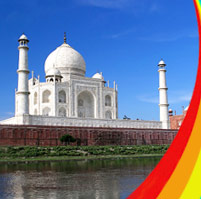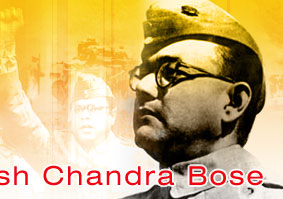The Indian National Army was the manifestation of
Subhash Chandra Bose's transformation from a Gandhian freedom fighter to
an armed revolutionary challenging the might of the British Empire.
Originally the brainchild of expatriate nationalist leader Rash Behari
Bose, the INA saw Subhash Chandra assuming the leadership of the outfit
as its supreme commander in 1943. With characteristic vigor and zeal,
Bose set about strengthening the fledgling organization and proclaimed
the Provisional Government of Free India in Singapore on October 21,
1943.
The Indian National Army was also known as the Azad Hind Fauj and it
owed allegiance to the Provisional Government which was recognized by
nine Axis states. The INA had a combat strength of 40,000 troops
comprising mainly of Indian expatriates in South Asia and Indian
prisoners of war. The INA also boasted of an exclusive women's combat
unit named the Rani of Jhansi regiment.
As the Japanese troops launched a major offensive through Burma, the
Azad Hind Fauj soldiers fought alongside them in the frontlines and
contributed in many victories. Previously in December, 1943 the Azad
Hind government had established its rule in the Andaman and Nicobar
Islands and renamed them as Shaheed (Martyr) and Swaraj (Self-rule). On
18 April 1944, the INA troops captured the town of Moirang in Manipur
and in a glorious display of patriotism, raised an Indian tricolor.
However the INA's total dependence on the Japanese troops for arms and
logistics support proved to be its undoing and as the might of the
Japanese began to wane, the INA too was forced to retreat. With the
subsequent surrender of Japan the INA resistance collapsed and a number
of officers and troops were captures by the British. The government
brought these officers to the Red Fort in Delhi for court martial but
eventually had to relent in the face of nationwide protests and
incidents of mutiny in the ranks of British Indian Army.
Subhash Chandra employed his great oratory skills to inspire the troops
of Indian National Army. On July 4, 1944, at a rally of Indians in
Burma, Bose famously proclaimed, "Give me blood, and I shall give
you freedom." "Delhi Chalo," another phrase attributed to
him, became the clarion call of the INA combatants as they marched
towards Indian territory.









